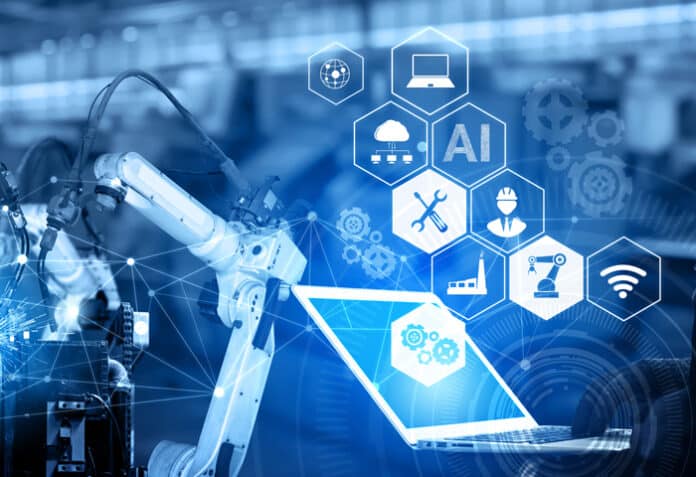Generative AI’s contribution to the Internet of Things (IoT) cannot be underestimated. It has the potential to truly transform this domain by improving the security of IoT networks and making IoT devices more affordable, among other things.
Since the launch of ChatGPT 3.5 on November 30, 2022, no one seems to be able to stop talking or hearing about the buzzwords ‘generative AI’. Generative AI is a type of artificial intelligence (AI) that can generate new content, such as text, images, audio, and video. It is trained on large data sets of existing content, and then uses this knowledge to create new and original content. Just like everything else, generative AI has the potential to transform the Internet of Things (IoT) in several ways. For example, it can be used to create synthetic data for training machine learning models, generate personalised experiences for users, or improve anomaly detection, and much more.
Let’s explore some of the specific ways in which generative AI is being used in IoT today, as well as review some of the potential future applications of this technology.
Creating synthetic data for machine learning
Leveraging generative AI to craft synthetic data for training machine learning models tackles a significant challenge in developing such models for IoT devices. While IoT devices can generate a lot of data, collecting and labelling it often proves expensive and time-consuming. Synthetic data originates artificially rather than from real world sources. It can be used to train machine learning models for a variety of tasks, such as anomaly detection, predictive maintenance, and quality control. For example, a manufacturing company could use generative AI to create synthetic data of machine failure scenarios. This data could then be used to train a machine learning model to detect anomalies in real-time and predict when machines are likely to fail.
Crafting personalised experiences
Generative AI can deliver personalised experiences to users of IoT devices. A smart home system can use generative AI to curate personalised lighting and temperature settings for individual users. Likewise, wearable devices can use generative AI to offer personalised workout recommendations. To create these personalised experiences, generative AI algorithms need to be trained on data about the user’s preferences. This data can be collected from a variety of sources, such as surveys, user interactions with the IoT device, and data from other sensors.
Improving anomaly detection
Improving anomaly detection with generative AI entails the identification of unusual or unexpected events in data. It is an important task for IoT devices, as it can be used to identify problems such as machine failures, security breaches, and fraud. Generative AI can be used to improve anomaly detection by generating synthetic data that represents normal operating conditions. This data can then be used to train a machine learning model to identify anomalies in real-time. For example, a power grid operator could use generative AI to create synthetic data of normal power consumption patterns. This data could then be used to train a machine learning model to detect anomalies in real-time, such as sudden spikes in power consumption.
Enabling on-device machine learning
On-device machine learning empowers IoT devices to run machine learning models locally without relying on cloud resources. Generative AI can be used to enable on-device machine learning by generating smaller and more efficient machine learning models. This is important because IoT devices often have limited computing resources. For example, a company could use generative AI to generate a smaller and more efficient machine learning model for anomaly detection. This model could then be deployed on IoT devices to enable on-device anomaly detection.
Automating network management
The complexity of automating network management for IoT networks requires innovative solutions. Generative AI emerges as a valuable solution to automate various aspects of network management such as device configurations and network traffic optimisation. For example, a company could use generative AI to create a system that automatically configures new devices when they are added to the network. This system could also be used to optimise network traffic by routing data over the most efficient paths.
Potential future IoT applications
As generative AI is a rapidly developing field, there are many potential future applications for this technology in IoT. For example, generative AI could be used to:
- Create new types of IoT devices, such as smart assistants that can understand and respond to natural language
- Develop new ways to interact with IoT devices, such as using gestures or voice commands
- Improve the security and reliability of IoT networks
- Make IoT devices more affordable and accessible to everyone

OpenAI Gym
As generative AI becomes mainstream, the open source community is contributing significantly to the journey. OpenAI is the front runner in advancing the innovation, education, and adoption of the newfound capabilities. OpenAI Gym is a toolkit for developing and comparing reinforcement learning algorithms. It provides a set of environments in which agents can learn to perform tasks such as balancing a pole, walking, and playing games.
OpenAI Gym is based on the Markov Decision Process (MDP) framework, which is a mathematical model for decision-making in sequential environments. In an MDP, an agent interacts with an environment by taking actions and receiving rewards. The agent’s goal is to learn to take actions that maximise its expected reward over time.
OpenAI Gym environments are typically simulated, but they can also be connected to real-world hardware. This allows agents to be trained in a variety of settings and then deployed to the real world without having to retrain them.
Let’s look at OpenAI Gym environments and how they work.
- State: The state of the environment represents the agent’s current situation. For example, the state of the CartPole environment includes the position and velocity of the cart, and the angle and angular velocity of the pole.
- Action space: The action space is the set of actions that the agent can take. For example, the action space in the CartPole environment consists of two actions: pushing the cart left or right.
- Reward function: The reward function specifies the reward that the agent receives for taking a particular action in each state. For example, the agent receives a reward of +1 for keeping the pole balanced in the CartPole environment.
To learn how to perform a task in an OpenAI Gym environment, an agent uses a reinforcement learning algorithm. Reinforcement learning algorithms work by trial and error. The agent tries different actions and observes the rewards that it receives. The agent then uses this information to update its policy, which is a mapping from states to actions.
Over time, the agent learns to take actions that maximise its expected reward.
OpenAI Gym provides a variety of environments for training reinforcement learning agents. Some of the most popular environments include:
- CartPole: The agent must balance a pole on a moving cart
- Acrobot: The agent must control a two-jointed robot arm
- LunarLander: The agent must land a lunar lander on a platform
- BipedalWalker: The agent must walk a bipedal robot
- Roboschool: A suite of environments for training robot locomotion skills
OpenAI Gym has a number of benefits.
- Easy to use: OpenAI Gym is easy to use, even for beginners. It provides a simple API for interacting with environments and training agents.
- Flexible: It is flexible and can be used to train agents for a variety of tasks. It also supports a variety of reinforcement learning algorithms.
- Community: OpenAI Gym has a large and active community. This means that there are a lot of resources available to help users get started and troubleshoot problems.
Generative AI has the potential to revolutionise the Internet of Things (IoT) in a number of ways. It is still a developing field, but can transform the way we interact with the world around us. As generative AI technology continues to mature, we can expect to see even more innovative and transformative applications in IoT and beyond. Open source solutions such as OpenAI Gym can be used to develop and train generative AI models for IoT applications. This makes generative AI more accessible to businesses and individuals of all sizes. The future of generative AI in IoT is bright. As technology continues to develop and mature, we can expect to see even more innovative and transformative applications.




